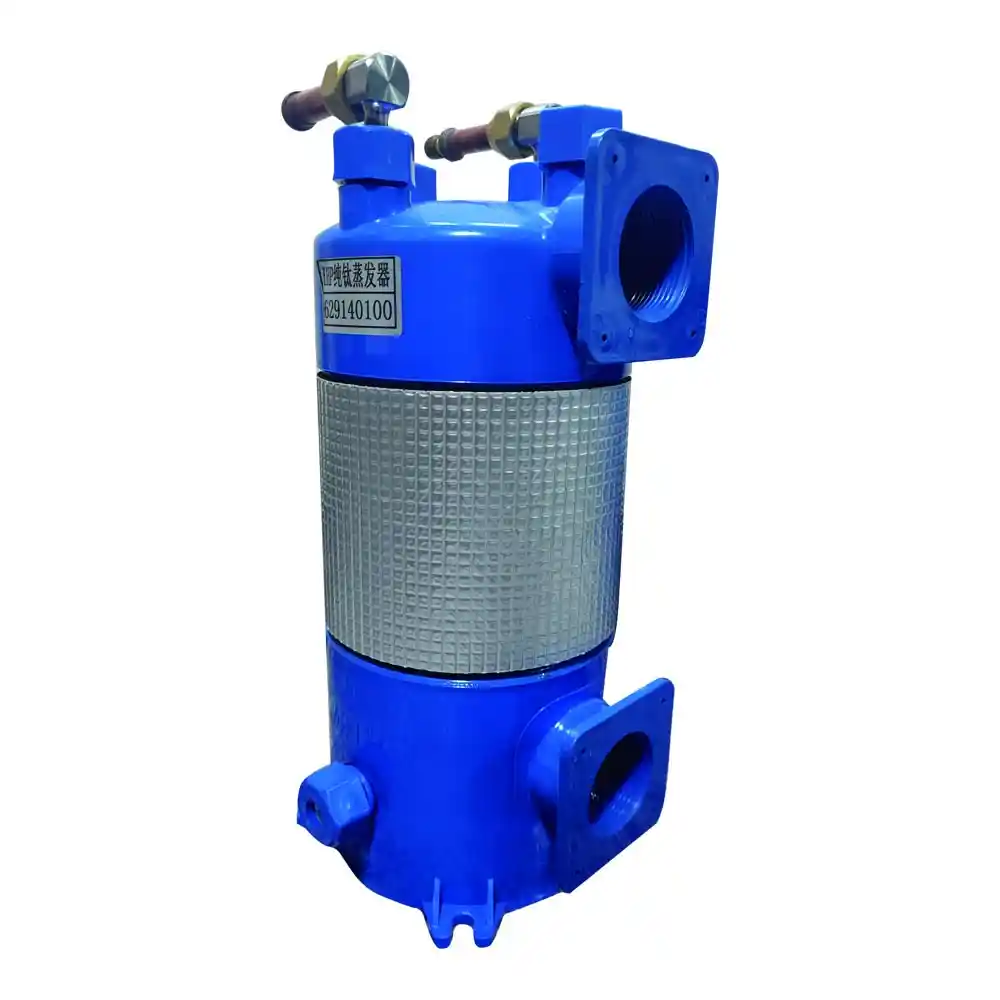1. Introduction
Welded connections are a fundamental aspect of titanium coil heat exchangers, playing a pivotal role in their performance, durability, and overall efficiency. This article delves into the significance of welded connections in titanium coil heat exchangers, exploring their benefits, techniques, challenges, and comparative analysis. By examining relevant data and informative tables, we aim to provide a comprehensive understanding of the role of welded connections in optimizing heat exchanger performance.
2. Understanding Welded Connections in Titanium Coil Heat Exchangers
Welded connections offer several advantages when employed in titanium coil heat exchangers:
2.1 Superior Strength and Durability
Welded connections provide exceptional strength and durability, ensuring the integrity of the heat exchanger under various operating conditions. The fusion of metals through welding creates a continuous and robust bond, eliminating the risk of loosening or failure due to vibrations or thermal expansions. This strength allows the heat exchanger to withstand high pressures and temperature differentials with ease.
2.2 Enhanced Heat Transfer Efficiency
Welded connections contribute to improved heat transfer efficiency in titanium coil heat exchangers. The absence of additional materials, such as gaskets or seals, eliminates any potential barriers to heat transfer, allowing for direct contact between the coil and shell. This direct contact promotes efficient heat exchange, leading to enhanced performance and energy savings.
2.3 Design Flexibility and Customization
Welded connections offer design flexibility and customization options in titanium coil heat exchangers. The welding process allows for intricate and precise joint formations, enabling the creation of complex coil configurations tailored to specific heat transfer requirements. This flexibility in design ensures optimal performance and compatibility with diverse applications.
3. Welding Techniques for Titanium Coil Heat Exchangers
Various welding techniques are utilized in the construction of titanium coil heat exchangers. Let’s explore some commonly used techniques and their characteristics:
3.1 Tungsten Inert Gas (TIG) Welding
TIG welding, also known as gas tungsten arc welding (GTAW), is a popular technique for welding titanium coil heat exchangers. It offers precise control over the welding process, ensuring high-quality welds with minimal heat distortion. TIG welding provides excellent weld strength and purity, making it suitable for applications where corrosion resistance and purity are critical.
3.2 Laser Welding
Laser welding is a precise and efficient technique for joining titanium coils in heat exchangers. The focused laser beam allows for localized heating, minimizing heat-affected zones and achieving narrow and consistent welds. Laser welding offers high welding speeds, exceptional precision, and minimal material distortion, making it ideal for high-volume production and complex coil geometries.
3.3 Electron Beam Welding
Electron beam welding (EBW) is a high-energy welding process suitable for titanium coil heat exchangers. It utilizes a focused beam of electrons to create a fusion between the metals. EBW offers deep penetration, high welding speed, and excellent control over the heat input. This technique ensures strong and reliable welded connections, particularly for thick-walled or heavy-duty heat exchangers.
4. Comparative Analysis of Welded Connections
A comparative analysis of different welded connection types in titanium coil heat exchangers can provide valuable insights into their characteristics and suitability. Let’s consider the following aspects:
| Welding Technique | Advantages | Limitations |
|---|---|---|
| TIG Welding | – High weld quality and purity | – Slower welding speed compared to other methods |
| – Precise control over the welding process | – Higher skill requirement for operators | |
| Laser Welding | – Exceptional precision and speed | – Initial setup cost for laser welding equipment |
| – Minimal heat-affected zones | – Limited penetration for thick materials | |
| Electron Beam Welding | – Deep penetration and high welding speed | – Expensive equipment and maintenance costs |
| – Excellent control over heat input | – Requirement of vacuum environment for operation |
By evaluating these aspects, engineers and designers can select the most suitable welding technique based on their specific requirements, including performance, cost, and production considerations.
5. Challenges and Considerations in Welded Connections
While welded connections offer numerous benefits, they also present certain challenges and considerations in the context of titanium coil heat exchangers:
5.1 Joint Integrity and Leak Prevention
Ensuring joint integrity and leak prevention is crucial in welded connections. Proper welding techniques, weld inspections, and adherence to industry standards are necessary to minimize the risk of leaks and failures. Additionally, post-welding treatments, such as stress relieving and surface finishing, can enhance the longevity and reliability of the welded connections.
5.2 Material Compatibility
Titanium coil heat exchangers often require compatibility with other materials, such as piping systems or shell components. It is essential to consider the compatibility of the welding materials with the base metal and other components to prevent galvanic corrosion or material incompatibility issues.
5.3 Welding Distortion and Residual Stresses
Welding can induce distortion and residual stresses in the heat exchanger structure. Proper design considerations, welding sequence planning, and heat management techniques, such as preheating and controlled cooling, can help mitigate these issues and maintain the structural integrity of the heat exchanger.
6. Conclusion
Welded connections play a vital role in the construction and performance of titanium coil heat exchangers. Their superior strength, enhanced heat transfer efficiency, and design flexibility contribute to the overall effectiveness and longevity of these heat exchange systems. By understanding various welding techniques, conducting comparative analyses, and addressing associated challenges, engineers and designers can make informed decisions in selecting and implementing welded connections. This knowledge empowers the creation of optimized titanium coil heat exchangers, ensuring efficient heat transfer, reliability, and performance in various industrial applications.


